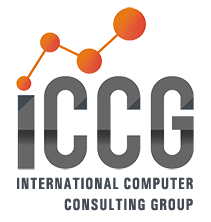Michael A. Lea is a 25-year technology veteran who has demonstrated strong consultative sales management and leadership qualifications, and continues to remain a thought-leader about advanced software and business solutions designed to meet the diverse and rapidly evolving business demands of his clients
He has held various positions of increasing responsibility such as Senior Technical Sales Consultant for Infor, VP of Sales & Business Development for Coolearth Technologies, and most recently as a Consultative Sales Executive for Bora Enterprises.
Q. Supply chain visibility is so essential for a manufacturer to manage the customer service levels. How do we bring transparency and traceability in supply chains?A. The priority and goal for any process manufacturer is to have complete lot tracking and traceability. This is commonly referred to as the “genealogy” of all raw materials, resources, and assets that enter a facility, and remain within the four walls of the facility until it passes through the facility as a final product or goods.
Real-time, accurate data and visibility are a necessity. The OTC (Order-to-Cash) systems and solutions must be closed-loop and work in conjunction and seamlessly from customer order/demand through the PTP (Plan-to-Produce), the manufacturing process (including vendors, suppliers, and co-packers) and then finally shipping, distribution and logistics.
As a consultant I’m frequently asked what is the main pitfall towards achieving transparency and traceability? This is a hard question and a huge consideration for manufacturers as each situation is different and unique. It’s one of the first things we address in our strategic consultation.

Q. In a regulated industry, compliance across the manufacturing process is mission critical. How can a food processing operation ensure quality and compliance?
A. The first step towards ensuring quality and compliance begins with real-time, accurate, and reliable data followed closely by creating repeatable and scalable processes. A specific suggestion and requirement and innovative approach that many companies now consider is to eliminate paper-based QA/QC inspection systems and employ the use of a QMS (Quality Management System).
Also, all food processing operations must have highly standardized and company-wide enacted HACCP (Hazard Analysis and Critical Control Points) and GMP (Good Manufacturing Processes) practices and procedures and protocols.
It all boils down to being able to prepare for audits and/or address a recall that, though you never hope happens, is always a possibility for food processing manufacturers.
Q. Having the right product at the right time, at the right place is easier said than done. This needs to be evaluated as to the complete product ideation to making it available for the end consumer process and what needs to be done to effectively manage this process. Is your company focused on “time to shelf?”
A. Quicker time to market – from raw product to shelf – can mean increased sales and profits in addition to minimizing returns/rejects. And nothing helps speed things up quite like automated processes.
Advanced planning and forecasting tools will also enable companies to move from ATP (Available-to-promise) to CTP (Capable-to-promise.) And, PLM (Product Lifecycle Management) tools provide companies the ability to understand and evaluate (and even enhance R&D) products from infancy and design through to approval and production.
Consideration and oversight of all supply and demand(s) must be understood and managed. Manual operations will exist (in varying degrees based upon industry and even industry type) but an interjection of proper and valuable automated systems are essential for continued success and profitability.
Click Here to share your questions for our consultants.

